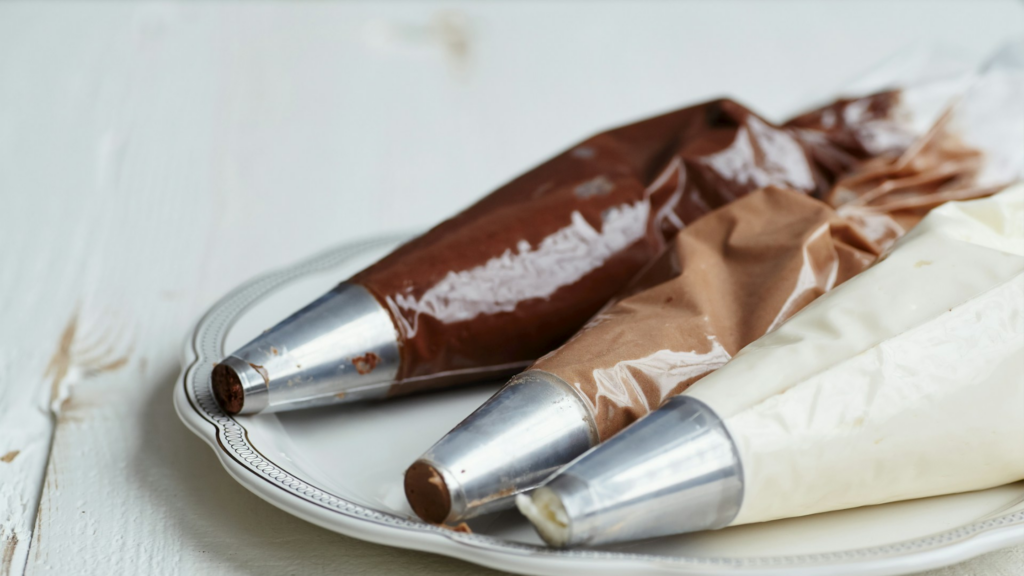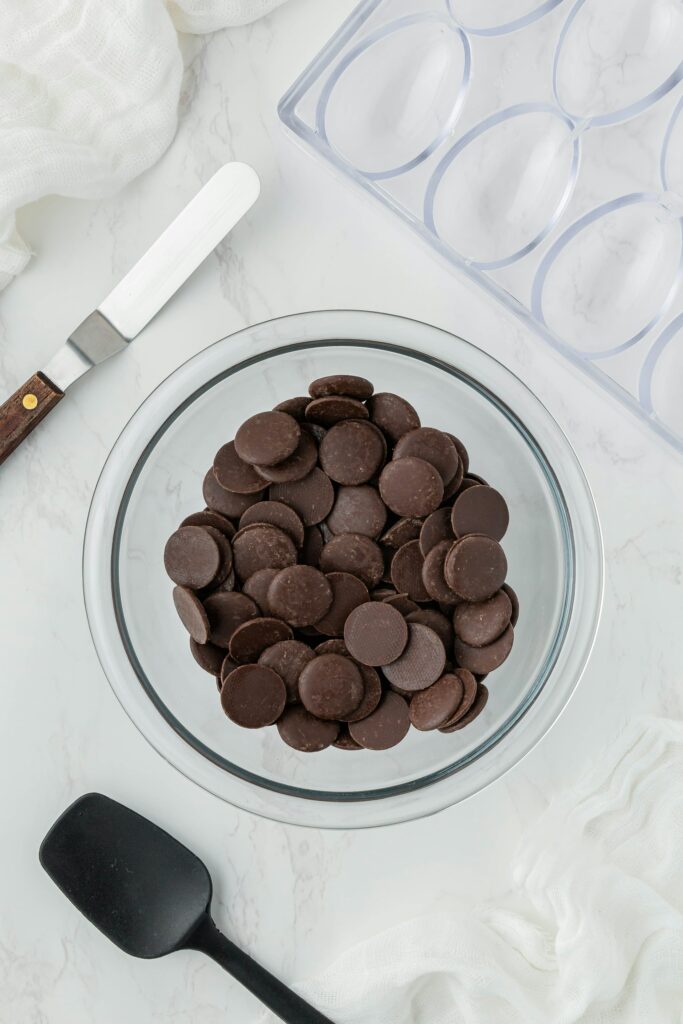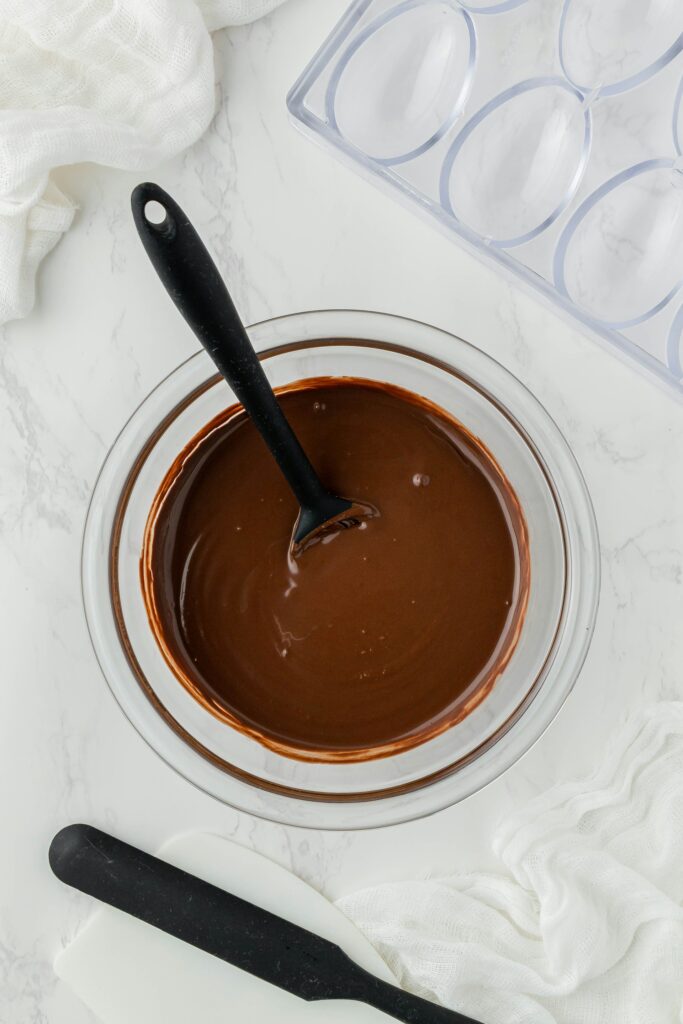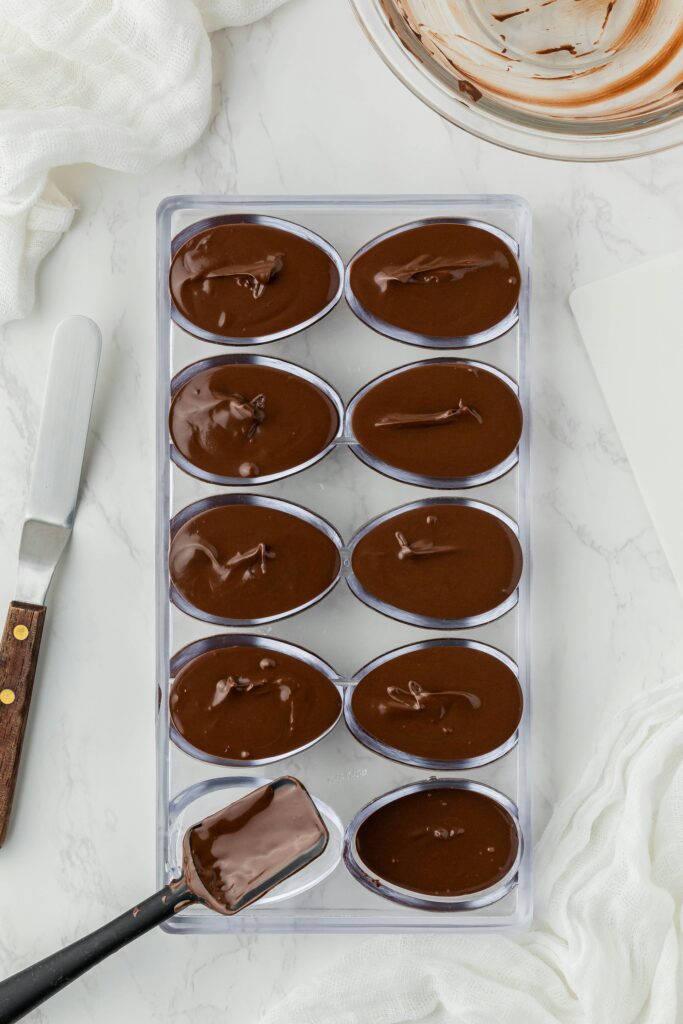
Viscosity in Chocolate – Choosing the Right Fluidity for Your Application
For those who are new to working with chocolate, tempering tends to be the most formidable challenge. We have plenty of resources available to help you slay that dragon… but before we get as far as tempering there’s another topic we get asked about a lot – chocolate fluidity, also referred to as viscosity. Luckily, this one is simple to tackle!
by Anna Clayton
10 May 2024

How is fluidity important to chocolate?
How thick your chocolate is will determine the thickness of your shell and how much snap your chocolate product will have. You might want an Easter egg with a nice thick shell and to be able to save time by casting it in one go. Or, perhaps you’re using a bonbon mould with a lot of fine detail, so a more fluid chocolate would work best and give you that finer shell with a premium-sounding snap!
We sell chocolate couvertures with different viscosities so that you can choose the right one for the right application.
What determines chocolate viscosity?
Cocoa butter! All chocolate couvertures are made from cocoa mass, cocoa butter and sugar. Milk chocolate also contains milk solids and white chocolate omits the cocoa mass. It’s the cocoa butter in your chocolate that affects how fluid it is. Thicker chocolate contains less cocoa butter, and thinner chocolate contains more. We’ll come onto how you can control that level of fluidity, but by buying a chocolate of the right fluidity for your application, the balancing of the ingredients is done for you. All chocolate from Keylink comes pre-tempered, so you’re good to go, straight from the bag.
How does temperature affect the viscosity of chocolate?
The higher the cocoa butter content, the faster the chocolate will melt, and the more fluid it will be while melted. Because tempering chocolate is all about carefully managing the temperature of your chocolate so that you achieve the right level of crystals for snap and shine, it’s good to have a general awareness of the cocoa butter proportion of your couverture, because it might melt faster than you think!
Plus, when it comes to cooling your chocolate ready to set, a more fluid chocolate will take longer to set than a more viscous chocolate.
How do I control the fluidity of my chocolate?
Melting your chocolate will, of course, make it turn from a solid to a liquid. Then, once your chocolate is tempered and ready to use, it can be helpful to be able to change the fluidity for use in different applications.
Buying the right fluidity of chocolate for your application takes all of the headache out of this process, but sometimes you’ll want to use the same chocolate across various applications. For example, you may have a house chocolate you want to use in everything from a bonbon shell to a figure mould or as a decoration for a dessert.
Keylink sells chocolates that are good all-rounders for use across your ranges, but even then, sometimes you’ll want full control over the viscosity.
To make your chocolate more fluid, you will need to add cocoa butter. At Keylink we sell cocoa butter in several forms. Adding around 10% to untempered chocolate and stirring until melted should re-crystallise your chocolate and make it less viscous. Adding cocoa butter is really helpful when working with a large batch of chocolate.
Our top recommendation for smaller batches? A wonder product called Callebaut Mycryo™. This is 100% cocoa butter in micro-powder form. Simply add around 2% to your melted chocolate and stir in! Voilà! More fluid chocolate, which in turn will give a higher gloss and snap.
It’s not often you would want to thicken chocolate, but if you do, you would add cocoa mass, which would reduce the percentage of cocoa butter. Again, start with 10% and keep stirring – you can always add a little more if needed. Bear in mind that the more mass you add, the more bitter your chocolate will become.


How does viscosity affect taste?
Flavour is a very subjective thing, and generally speaking, making a chocolate 10% more fluid will not affect the flavour in any meaningful way.
At extreme ends of the viscosity scale, though, the fluidity can affect the taste experience in a couple of ways:
- The mouthfeel – we can perceive thicker chocolate as being more creamy and smooth – a bit like peanut butter! Really thick chocolate will stay on the palate for longer, will release flavour more gradually and lead to a more prolonged taste. More fluid chocolates could be thought of as ‘clean-tasting’ and which you choose could depend on the flavours with which you are pairing your chocolate.
- By the same token, thicker chocolate can be perceived as sweeter, depending on the type being used. This is good news for making things like thick Easter egg shells, where sweetness is a big part of the indulgence.
How do I know the fluidity of the chocolate I’m buying?
Some chocolate manufacturers, such as Cacao Barry, Callebaut, Luker and Veliche Gourmet, will state the fluidity level of the contents clearly on their packs. You can see these on the Keylink website. The more drops, the more fluid the chocolate will be when melted.
Others, such as Valrhona, don’t use a viscosity scale, but instead provide information on the applications for which their chocolates are suitable – which is really why you would want to know how viscous a chocolate is.
If you aren’t sure about the viscosity of a chocolate from Keylink, by all means ask us! We can often share our experience of working with them, or even contact the supplier with your questions. By and large, unless one of our chocolates shows as being particularly fluid or thick – Callebaut L811, for example, is very low fluidity at just one drop – the chocolate will be suitable across all usual applications.
Why has my chocolate gone so thick?
If you have bought a chocolate that is not meant to be low viscosity but that has gone very thick, it tends to be a tempering issue. Usually this relates to temperature, or even that moisture has got into the chocolate and it has seized. You can read all about tempering and common issues with chocolate in our articles:
Hope this guide has answered your questions about chocolate fluidity, but if you have more just get in touch and we’ll be pleased to help!

Anna is Keylink’s Marketing Manager and loves getting stuck into all things ethics and sustainability.
Her current favourite chocolate is Valrhona’s Manjari… but watch her – she’s fickle!